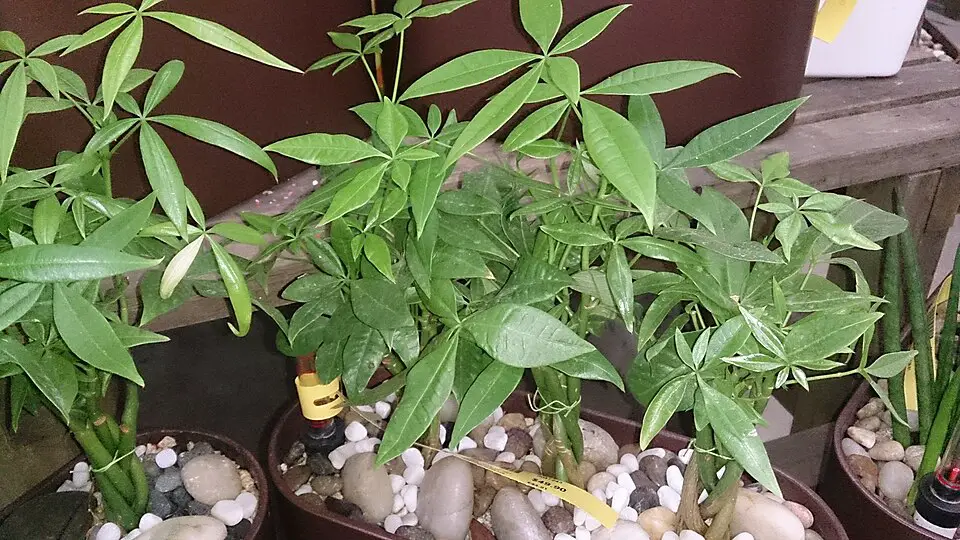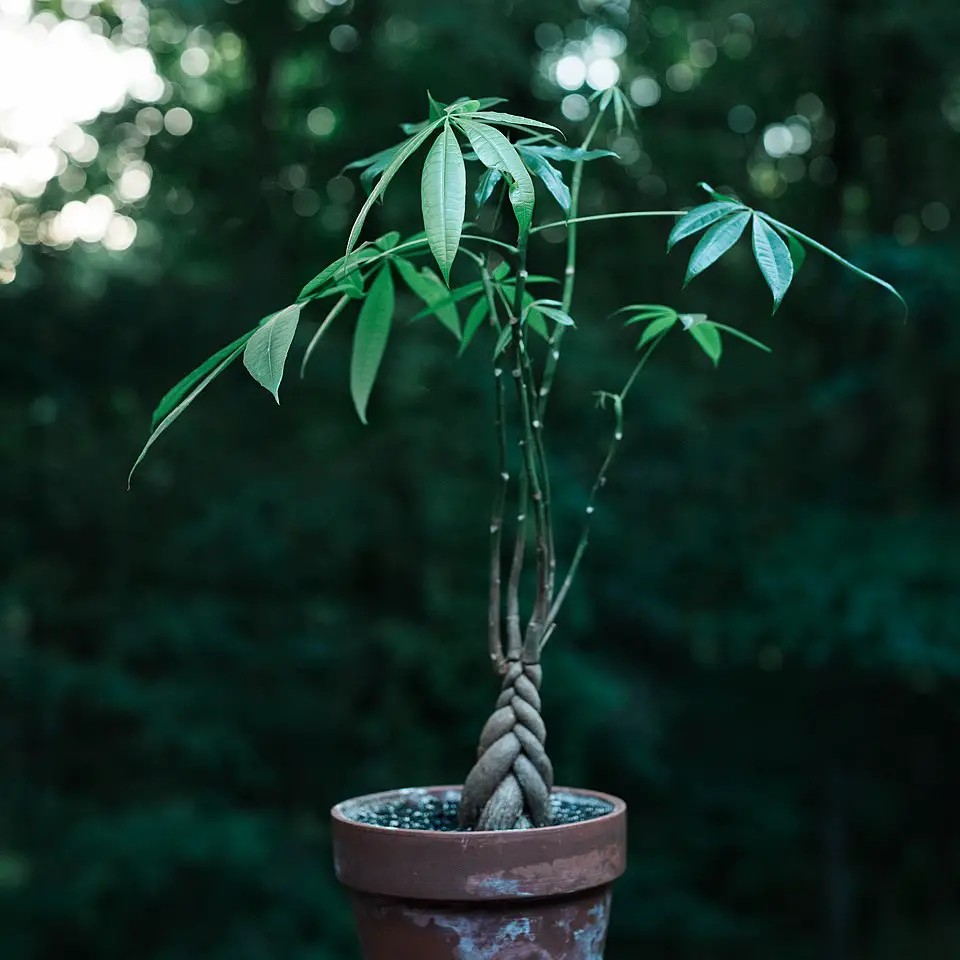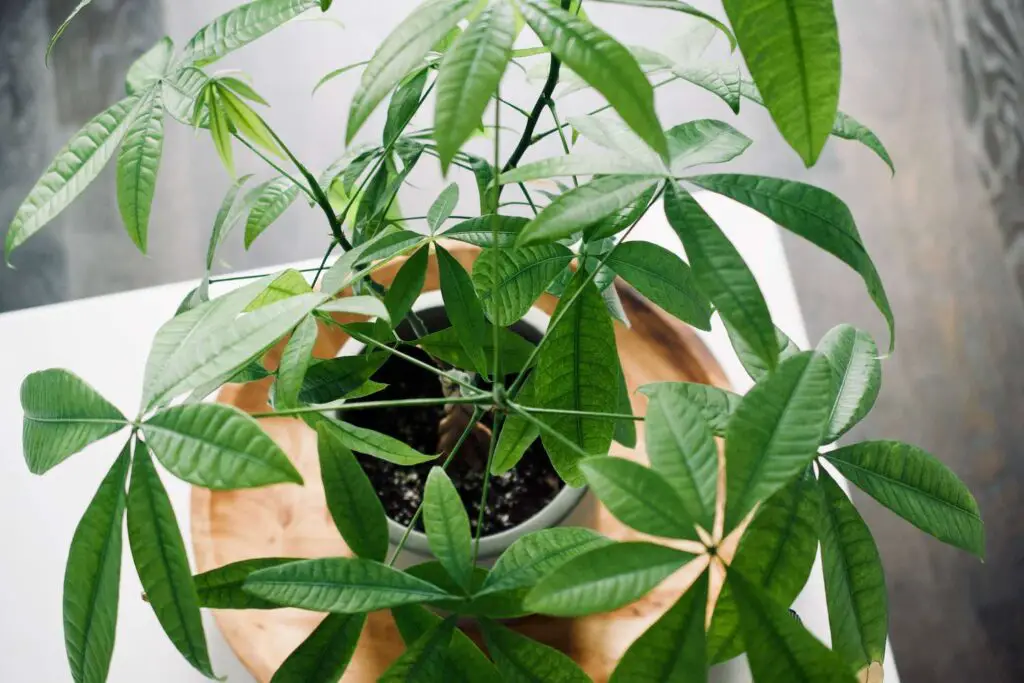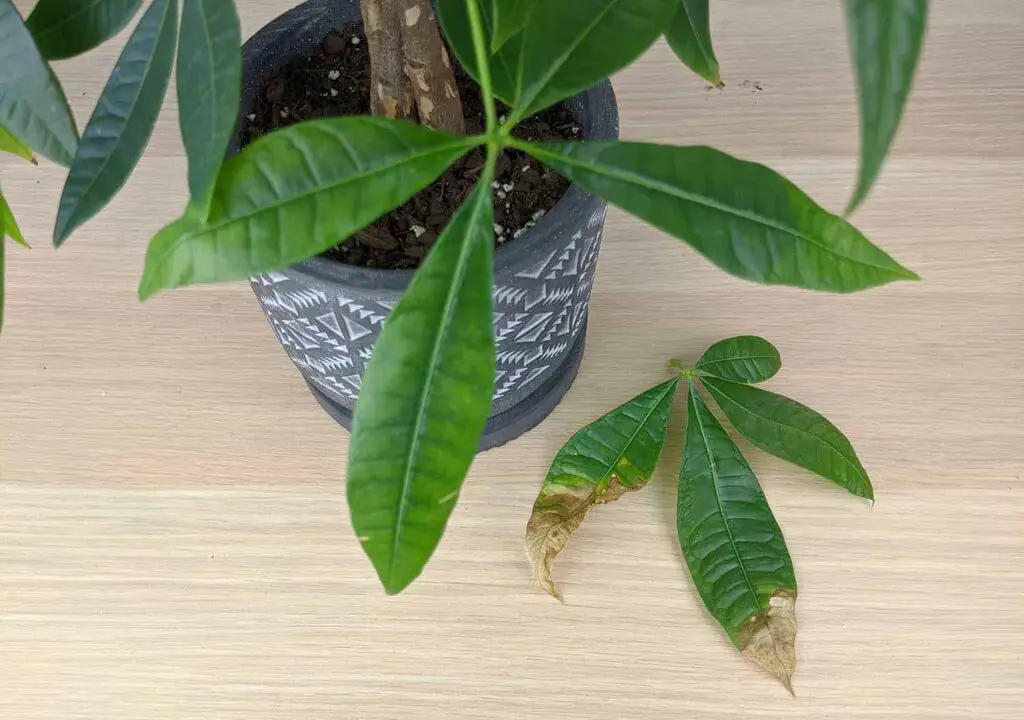Money tree plants can droop due to various reasons, including overwatering, underwatering, or insufficient light. To revive your plant, assess its environment and care routine, adjust watering practices, and provide adequate light. Simple fixes can help restore its health and vigor.
Understanding the Money Tree Plant
The money tree, scientifically known as Pachira aquatica, is a popular houseplant known for its braided trunk and lush green leaves. This plant is often associated with good fortune and prosperity in various cultures. While it is relatively easy to care for, it can sometimes exhibit signs of distress, such as drooping leaves. Understanding the causes of this drooping is essential for effective revival.

Money trees thrive in bright, indirect sunlight and prefer a warm environment. They are native to Central and South America, where they grow near water sources. This natural habitat influences their care requirements when grown indoors. Proper watering and lighting conditions play a crucial role in keeping the plant healthy and vibrant.
Common Causes of Drooping
Drooping leaves can indicate several underlying issues. Identifying the cause is the first step to taking action. Below are some common reasons why your money tree may be drooping:
- Overwatering: Excess water can lead to root rot, causing the plant to droop.
- Underwatering: Lack of moisture can also lead to drooping leaves as the plant becomes dehydrated.
- Insufficient Light: Money trees need bright, indirect light. Too little light can weaken the plant.
- Pests or Disease: Infestations or infections can affect the health of the plant.
- Temperature Fluctuations: Sudden changes in temperature can stress the plant.
Assessing Your Money Tree’s Condition
To effectively address drooping leaves, closely observe your money tree’s condition. Here are some steps to assess its health:

- Check the soil moisture by sticking your finger about an inch deep into the soil.
- Inspect the leaves for any signs of pests, such as small webs or spots.
- Evaluate the light exposure by noticing where the plant is located during the day.
- Observe for any signs of temperature stress, like drafts or proximity to heating vents.
Reviving Your Money Tree
Once you have identified the potential cause of drooping, you can begin to implement simple fixes. Here are some effective strategies to revive your money tree:
Adjusting Watering Practices
Watering is one of the most critical aspects of money tree care. Follow these tips for effective watering:
- Water only when the top inch of soil feels dry.
- Ensure the pot has drainage holes to prevent water from sitting at the bottom.
- If overwatering has occurred, allow the soil to dry out completely before watering again.
Improving Lighting Conditions
If your money tree is not getting enough light, consider relocating it. Here are some ideas:

- Place it near a window with filtered sunlight.
- Avoid direct sunlight, which can scorch the leaves.
- If natural light is limited, consider using grow lights.
Pest Control
If pests are detected, treat them promptly to prevent further damage. You can use:
- Naturally derived insecticidal soap or neem oil.
- A damp cloth to wipe off pests gently from the leaves.
| Condition | Symptoms | Solution |
|---|---|---|
| Overwatering | Drooping leaves, yellowing | Allow soil to dry out |
| Underwatering | Droopy leaves, dry soil | Water thoroughly |
| Insufficient Light | Droopy and pale leaves | Move to brighter location |
By addressing these key areas, you can significantly improve the health of your money tree and restore its vibrant appearance. Remember that consistent care and monitoring are essential for maintaining your plant’s well-being.
Maintaining Optimal Conditions for Your Money Tree
After addressing the immediate causes of drooping, it is essential to maintain optimal conditions for your money tree to flourish. Understanding the specific needs of your plant is critical for its long-term health. This section will cover the ideal environment, watering techniques, and fertilization practices to keep your money tree thriving.
Ideal Environment for Growth
Creating a suitable environment is vital for the well-being of your money tree. Consider the following factors:

- Light: Money trees prefer bright, indirect sunlight. Place them near windows that receive filtered light. Avoid direct sunlight, as it can scorch the leaves.
- Temperature: Keep your money tree in a warm area. Ideal temperatures range from 65°F to 75°F (18°C to 24°C). Protect it from drafts or sudden temperature changes.
- Humidity: Money trees thrive in higher humidity levels. If your home is dry, consider using a humidifier or placing a tray of water near the plant.
Watering Techniques
Proper watering is crucial for maintaining a healthy money tree. Here are some effective techniques:
- Check Soil Moisture: Always check the soil moisture before watering. Insert your finger about an inch into the soil. If it feels dry, it’s time to water.
- Water Thoroughly: When watering, ensure that water reaches the roots. Water until it drains from the bottom of the pot.
- Avoid Waterlogging: After watering, allow excess water to drain completely. Empty any saucers under the pot to prevent root rot.
Fertilization for Healthy Growth
Fertilizing your money tree can provide essential nutrients that promote growth and vitality. Here are some tips on how to fertilize effectively:
Choosing the Right Fertilizer
Select a balanced, water-soluble fertilizer that contains equal parts nitrogen, phosphorus, and potassium (NPK). A formulation like 20-20-20 is ideal for money trees. Look for fertilizers specifically designed for houseplants.
Fertilization Schedule
The frequency of fertilization depends on the growing season:
- Spring and Summer: During these active growth months, fertilize every four to six weeks.
- Fall and Winter: Reduce or cease fertilization during these dormant months when the plant’s growth slows down.
Application Method
To apply fertilizer effectively, follow these steps:
- Dissolve the recommended amount of fertilizer in water according to package instructions.
- Water your plant with the nutrient solution until it drains from the bottom.
- Avoid applying fertilizer to dry soil, as this can damage the roots.
Monitoring Plant Health
Regular monitoring of your money tree’s health is essential for early detection of issues. Consider these tips:
- Leaf Inspection: Check leaves regularly for signs of pests or diseases. Look for discoloration, spots, or webbing.
- Soil Check: Monitor soil moisture and texture. It should be well-draining and not overly compacted.
- Growth Patterns: Observe the overall growth. Healthy leaves should be firm and vibrant green.
Common Pests and Diseases
A money tree may encounter common pests such as spider mites, mealybugs, and aphids. Here are some signs to watch for:
l>
If you notice any pests, act quickly by using insecticidal soap or neem oil to treat infestations effectively.
Pruning and Grooming Your Money Tree
Pruning is an essential part of maintaining your money tree’s shape and health. Here are some guidelines for effective pruning:
- Timing: Prune during the growing season in spring or early summer when the plant is actively growing.
- Cuts: Use clean, sharp scissors or pruning shears to make cuts at a 45-degree angle just above leaf nodes.
- Remove Dead Leaves: Regularly remove any yellow or dead leaves to encourage new growth.
By implementing these maintenance practices, you can create an environment where your money tree can thrive while preventing any further issues, including drooping leaves.
Repotting Your Money Tree
Repotting your money tree may be necessary if it has outgrown its current container or if the soil quality has declined. This process can help rejuvenate the plant and encourage healthy growth. Below are some guidelines to ensure a successful repotting experience.
Signs That Your Money Tree Needs Repotting
Before repotting, it’s essential to identify the signs that indicate your money tree may need a new home:
- Root Bound: If you see roots growing out of the drainage holes or circling the top of the soil, it is time to repot.
- Soil Degradation: Soil that appears compacted or has an unpleasant smell may indicate that it has lost its nutrients.
- Stunted Growth: If your money tree seems to have stopped growing despite proper care, it may need more space.
Choosing the Right Pot and Soil
When repotting, selecting an appropriate pot and soil is crucial for your money tree’s health:
- Pot Size: Choose a pot that is one size larger than the current one. Ensure it has drainage holes to prevent waterlogging.
- Soil Type: A well-draining potting mix is essential. Look for a mix designed for houseplants or create your own by combining potting soil with perlite or sand.
Steps for Repotting
Follow these steps for a smooth repotting process:
- Prepare the New Pot: Place a layer of fresh potting mix in the bottom of the new pot.
- Remove the Plant: Gently remove the money tree from its current pot. You can tap the sides of the pot or use a spatula to loosen the edges.
- Inspect the Roots: Check for any signs of rot or damage. Trim away any brown, mushy roots using clean scissors.
- Place in New Pot: Position the money tree in its new pot and fill in with fresh soil, ensuring that the root ball is level with the soil surface.
- Water Thoroughly: After repotting, water your money tree well to help settle the soil around the roots.
Common Issues and Solutions
>As you care for your money tree, you may encounter various issues beyond drooping leaves. Understanding these common problems can help you respond effectively.
Leaf Discoloration
If you notice discoloration in your money tree’s leaves, it can indicate several problems:
- Yellowing Leaves: This may signal overwatering or nutrient deficiency. Check soil moisture and consider fertilizing if needed.
- Browning Edges: Browning tips often result from underwatering or low humidity. Adjust watering practices and increase humidity levels if necessary.
- Pale Leaves: Leaves that are pale can indicate insufficient light. Move your plant to a brighter location.
Wilting Leaves
Wilting leaves can be alarming and may indicate stress due to several factors:
- Underwatering: If leaves are wilting, check soil moisture. Water thoroughly if the soil is dry.
- Pests: Pests can cause stress and lead to wilting. Inspect for infestations and treat accordingly.
Excessive Leaf Drop
If your money tree is dropping leaves excessively, it could be due to stress from various causes:
- Environmental Changes: Sudden changes in light or temperature can cause leaf drop. Try to minimize drastic adjustments.
- Pest Infestation: Check for pests that may be damaging the plant. Treat them promptly to prevent further leaf loss.
Caring for Your Money Tree During Winter
The winter months can pose challenges for your money tree. Here are some tips to ensure its health during colder weather:
- Avoid Cold Drafts: Keep your plant away from windows or doors that might let in cold air.
- Lesser Watering Needs: During winter, your money tree will require less water due to decreased growth rates. Check soil moisture regularly.
- Increase Humidity: Use a humidifier or place water trays nearby to maintain higher humidity levels in dry indoor air.
Caring for your money tree through these various challenges can help ensure it remains healthy and vibrant year-round. By being attentive to its needs and making necessary adjustments, you can enjoy a thriving plant in your home.
Additional Tips for Long-Term Care
>To ensure your money tree remains healthy and vibrant for years to come, consider implementing these additional care tips:
Rotate Your Plant
Regularly rotating your money tree can promote even growth. The plant may naturally lean towards the light source, which can result in uneven growth. By turning the pot every few weeks, you encourage symmetrical growth and a balanced appearance.
Monitor for Signs of Stress
Being vigilant about your plant’s condition can help you catch issues early. Monitor for:
- Leaf Color Changes: Sudden changes in leaf color can indicate problems.
- Wilting or Drooping: These signs often reflect watering issues, whether too much or too little.
- New Growth: Healthy new growth is a positive sign. If new leaves are smaller than usual, reassess care routines.
Consider Propagation
If your money tree is thriving, you might consider propagating it. Propagation can be an enjoyable way to expand your plant collection. Here’s how:
- Choose a Cutting: Select a healthy stem with several leaves.
- Cut the Stem: Use clean scissors to cut a section about 4-6 inches long.
- Rooting Process: Place the cutting in water or directly into moist soil. If using water, change it regularly and watch for root development.
Final Thoughts
Caring for a money tree involves understanding its specific needs and addressing any issues that arise promptly. From proper watering practices to creating the right environment, each aspect plays a crucial role in maintaining the health of your plant. By implementing preventative measures and being attentive to changes, you can enjoy the beauty and benefits of your money tree for many years.
Remember that every plant is unique; what works for one may not work for another. Observing and adapting to your money tree’s specific conditions will yield the best results. With patience and care, your money tree will thrive, providing a sense of calm and prosperity in your space.
As you continue your journey as a plant caregiver, keep learning about different care techniques and observe how your money tree responds. The process of nurturing a plant can be rewarding, offering both challenges and joys along the way. Enjoy the experience, and may your money tree flourish!
